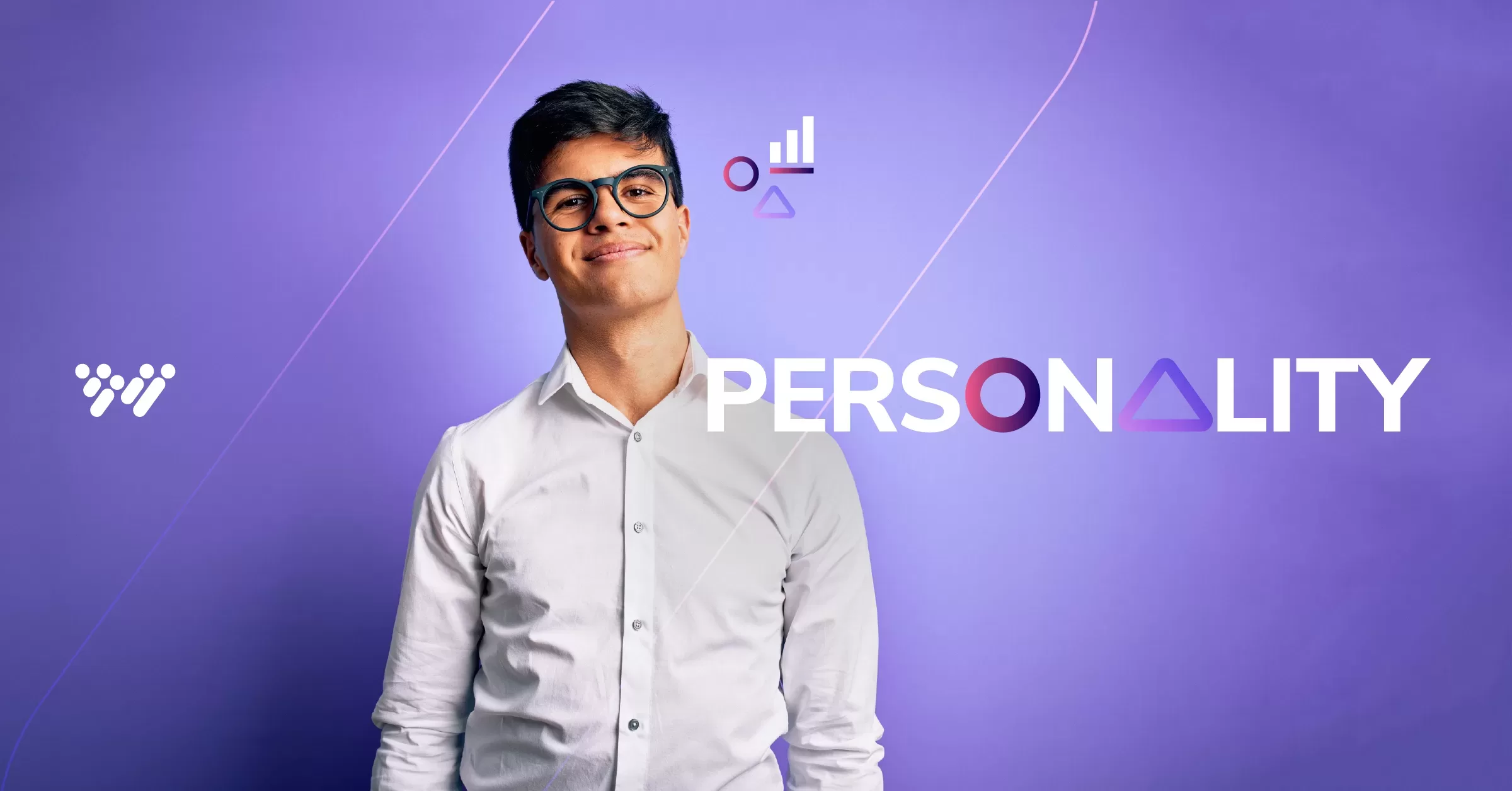Hiring the right people is a never-ending, high-stakes challenge.
Crack the code and your company will likely thrive. Struggle and you risk costing your company serious time and money (to the tune of one half to two times the salary of the bad hire); reducing productivity; and damaging the morale of your existing employees who often shoulder the workload left in the wake of bad hires.
The obvious way to avoid these costs is by getting smarter about the way you evaluate candidates at the top of the funnel—and that’s where employment assessments come in.
Pre-employment testing provides objective data that interviews and resumes simply can’t—about what a candidate is able to do, how they’re most likely to behave on the job, what intrinsically motivates them—and more.
For decades, studies have shown that employers who use employee testing grounded in objective data report significantly better quality of hires. In fact, a recent survey reported that talent pros using assessments are 3.7 times more likely to deem their quality of hires to be excellent than those who don’t. And those who use assessments are also twice as likely to be optimistic about hiring in the near future.
In this article, we’ll dig into the wide variety of pre employment testing companies offering these kinds of tools (including variations on pre employment aptitude tests, pre-employment personality tests, pre-employment skills testing and more); we’ll talk about the many bottom-line benefits to top-of-funnel employee testing; we’ll look at the pros and cons of the many options on the market; and we’ll explain how easy it is to integrate pre-employment testing into your existing hiring process.
Let’s dig in.
Table of Contents:
1. What are pre-employment tests?
2. The many benefits of pre-employment testing
3. How to decide which pre-employment test to buy
4. How to include pre-employment assessment testing in your hiring process
5. Conclusion

What are pre-employment tests?
Pre-employment tests (or pre-employment assessments) are quantitative tools that recruiters and hiring teams use to screen potential candidates and find the best match for their open job roles. This kind of employment assessment or test provides objective, candidate-specific data about the candidate’s existing competencies, offering a helpful “under-the-surface” perspective on a candidate that resumes and interviews, which are prone to bias and subjectivity, can’t.
A Short History of Pre-Employment Testing
While there’s record of cognitive employment tests being administered to potential workers as far back as the Han Dynasty in China, pre-employment tests as they’re understood now began gaining traction in the late 19th century and were first used in a widespread way by the U.S Army to assess potential recruits during World War I.
In the mid-1930’s, E.L. Wonderlic created the first short-form cognitive ability test, designed specifically to help employers in a variety of industries identify whether their potential hires had the ability to perform the work required of a particular job. Other companies soon popped up, offering other variations of cognitive and personality assessments.
With the advent of the internet in the 90s and early 2000s, many pre-employment testing companies shifted to digital employee testing options that can be administered via computer and taken online.
Since then, pre-employment testing has continued to evolve and improve. Now, cutting-edge pre-employment testing companies are using machine learning, artificial intelligence (AI), and I-O psychology to more accurately match roles to job profiles, and are exploring using new and novel technologies, including computerized adaptive testing, video-based simulations, and gamified assessments.
Some of the most common types of pre-employment tests include:

Cognitive ability tests
Cognitive ability tests—sometimes called aptitude or general mental ability tests — assess a candidate’s ability to learn, adapt, solve problems, and process complex ideas. Usually, these tests feature challenges related to simple math, logic, language comprehension, memory, and spatial reasoning. These assessments help hiring managers to choose better candidates, predict job success, and develop a more agile workforce.
Importantly, cognitive ability is recognized as the construct most predictive of future job performance. This conclusion has been repeatedly confirmed over the past 100 years, most definitively in a 2021 study conducted by I-O psychologist Paul Sackett and colleagues.
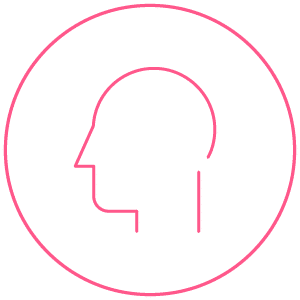
Personality tests
Pre-employment personality tests provide insight into qualities like a candidate’s interpersonal preferences, general temperament, and behavioral tendencies.
Unlike a cognitive ability test, there are no right or wrong answers, only insights into a person’s stable behavioral traits.
One of the most trusted pre-employment personality test frameworks is The Five Factor Model. This model measures a person’s Agreeableness, Conscientiousness, Extroversion, Openness to Experience, and Emotional Stability—the dimensions of personality that I-O research has deemed most comprehensive.
Combining data from a work personality test with cognitive ability data has been proven to add what’s called incremental validity—a statistically meaningful layer of predictive insight that is more predictive than either assessment on its own.
Because pre-employment personality testing also provides insight into a candidate’s preferred ways of working with people, data from these assessments can be used to better manage an employee once they’ve been hired.
Warning:
Many well-known personality tests are intended for employee development, not candidate selection. (As the website for the popular Myers-Briggs Type Indicator assessment tool specifically states, “It is not ethical to use the MBTI instrument for hiring or for deciding job assignments.”)

Interest or Motivation
Interest or motivation assessments provide valuable insight into a person’s work-related interests by measuring what drives them and what they need in place in order to succeed. Combining data from a motivation test with cognitive ability and personality data has also been shown to add incremental validity above even what the combination of the two can do.
Many interests assessments are based on the RIASEC model created by John Holland, which measures how a candidate’s results across the following characteristics match the types of tasks and duties required for a specific job:
- Realistic (Hands-on physically demanding work)
- Investigative (Analytical, scientific, intellectual positions)
- Artistic (Imaginative, creative, expressive work)
- Social (Teaching, providing care, serving others)
- Enterprising (Persuasion, balancing a bottom line, revenue generation)
- Conventional(Structured, repeatable, predictable)
A relatively small percentage of pre-employment testing companies offer motivation assessments; many are focused exclusively on cognitive ability or personality assessments.

Emotional intelligence
Emotional intelligence (EI) is a concept popularized in the 1990s that describes a person’s awareness and understanding of emotions and ability to productively use that information.
Specifically, EI focuses on five main categories—self-awareness, self-regulation, motivation, empathy, and social skills. Employers turn to EI tests to give them insights into a person’s ability to collaborate with, lead, and influence others.
The problem with EI tests? Though they’ve been branded as something shiny and new, they’re essentially measuring the same elements as most cognitive and personality tests. If you’re already measuring cognitive ability and personality, EI tests aren’t going to add anything new.

Integrity tests
Integrity tests are meant to assess a job applicant’s tendency to be honest and dependable in the workplace. There are two types of integrity tests: overt and covert.
Overt integrity tests make no attempt to disguise the purpose of the test and often ask applicants about their history (or lack thereof) of wrongdoing. Covert tests are less transparent and measure some of the same factors as standard personality tests, particularly conscientiousness, emotional stability, and agreeableness.
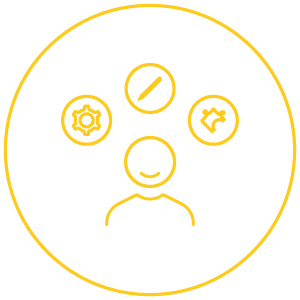
Skills tests
Whereas the data from cognitive ability, personality, and motivation tests are broadly applicable to thousands of jobs, pre-employment skills testing is designed to measure whether someone can perform the specific tasks required to succeed in a particular job.
Skills assessments or tests for employment focus on basic, general skills like verbal, math, and communication skills; some focus on more specific skills like typing and computer abilities; others take the form of highly complex job simulations.
Considering that the current half-life of a learned skill is estimated to be only five years*, compared with an estimated 12-15 years in the 1970s, a candidate’s existing skill set is becoming increasingly less important than their ability to take on new skills.
*This means that five years from now, an employee’s current skill set will be worth about half as much as it is today.

Games-based tests
This type of job assessment attempts to measure the same competencies (e.g., cognitive ability, personality) as basic question-and-answer employment tests, in a game-based format. They’re new to the assessment space, use lots of images, and advertise themselves as a quick alternative to traditional, long-standing assessments.
While they may be short and “fun,” the science behind these tests is usually lacking, however. They can show you generally what type of person a candidate is—but they fall short when it comes to providing validity evidence and job-related insights on how a candidate will fit into a particular role.
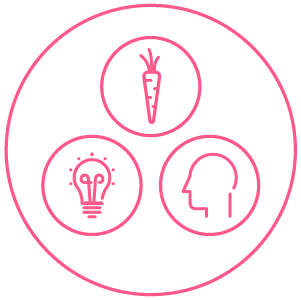
Multi-measure tests
These hiring assessments measure multiple constructs like cognitive ability, personality, and motivation and synthesize the combined insights into an easy-to-understand score.
Each additional independent construct that’s layered on creates further incremental validity, producing a more comprehensive picture of a candidate’s potential to succeed.
WonScore, Wonderlic’s flagship pre-employment assessment is a multi-measure test. See how it works here.

The many benefits of pre-employment testing
Pre-employment assessment or testing, done well, can benefit organizations in a variety of ways, some obvious and some less so. Here are a few of the benefits you can expect from taking advantage of the many tools offered by pre-employment testing companies.
Improve the quality of your hires
Because pre-employment candidate testing is predictive of future success on the job, implementing pre-employment testing results in better quality hires overall.
Specifically, these kinds of assessments can help employers gain valuable insights into whether a candidate will be able to actually do the job; how well they’ll handle stress and solve problems; how they might interact others on their team, and to what degree the responsibilities of the role aligns with work challenges they enjoy, to name just a few.
In a validation study Wonderlic conducted for a call center client, it was confirmed that candidates who had a WonScore score in the top quartile (75-100) outperformed those who scored in the bottom third quartile (25-50) by a whopping 70%. Job incumbents included in the study were in the role for at least six months, and performance data was aggregated across multiple points in time, spanning at least a year.

Identify nontraditional candidates with high potential
Pre-employment testing can help hiring managers uncover the “hidden gems” they might otherwise overlook.
The objective data provided by this kind of candidate testing allows hiring teams to see whether they have the competencies necessary to excel, regardless of their work experience or level of education. Identifying these high-potential nontraditional candidates can give employers a leg up on competitors who don’t use pre-employment assessments at all, or use less effective assessments.
Typically, the hiring teams at Champion Automotive, an auto services company in Michigan, had filled their finance manage positions with recent college graduates with a background in finance.
By using Wonderlic assessments, however they were able to identify a nontraditional candidate (a woman with decades of bank teller experience) as having the right competencies for the job, brought her in for an interview, and quickly hired her. She’s been with the team for over two years now and is performing in the top 20% of the company’s finance managers.

Chip Elliot | HR Manager, Champion Automotive
Streamline your hiring processes
Pre-employment testing helps streamline your recruiting process, allowing companies to confidently identify poor-fit candidates, based on their competencies, even before reviewing their resumes and cover letters.
(With WonScore, scores under 50 (out of 100) indicate that candidate is more likely than not going to be a poor fit for the positions; many employers will then eliminate candidates with sub-50 scores in order to focus their attention on higher-potential alternatives.)
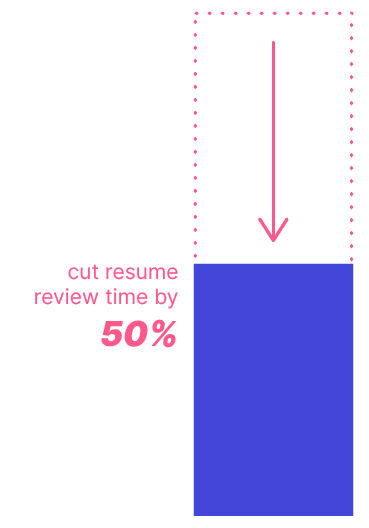
Dipasqua Enterprises, a food services employer, said it cut resume review time by 50% by using Wonderlic’s WonScore hiring assessment.
Reduce turnover
Employee turnover is a costly setback for employers. A survey by Gallup estimated turnover expenses at a 100-person company with an average salary of $50,000 to be anywhere from $660,000 to $2.6 million per year.
By identifying candidates who have the skills, temperament and motivation needed to succeed in their role, pre-employment testing is your best shot at hiring employees who will stick around. In this high turnover market, reducing turnover and boosting employee retention can be a huge bottom-line advantage.
Insights from Wonderlic candidate testing have helped hundreds of companies hire smarter and lower their turnover rate. Here are a few examples:
Duracell Remotes
reduced turnover by
400%

North Bay Animal and Bird Hospital
reduced turnover by
57%

Anixter
reduced turnover by
44%.

Create a more fair and equitable hiring process
Diversity, equity, and inclusion initiatives have become more commonplace in the past decade—and are changing the world of work for the better. However, despite this emphasis on equity and fairness, the hiring process is still susceptible to the effects of unconscious bias.
Even the most conscientious hiring teams can find themselves making decisions influenced by their own subjective (and suspect) criteria for job success. While resumes seem objective, the information candidates include is often embellished or worse. In a 2020 ResumeLab study, more than a third of respondents said their resume contains at least one significant job-related lie.
Interviews, often seen as the most transparent of job testing methods, can also be extremely subjective. Highly competent candidates can get passed over because they got nervous in the interview. Less competent candidates skilled at what psychologists call “impression management” might make the cut only to underperform on the job. And so on.
Pre-employment testing significantly reduces hiring bias by adding a component of objective, scientific candidate data into the conversation that can also help hiring teams ask more productive and relevant interview questions.
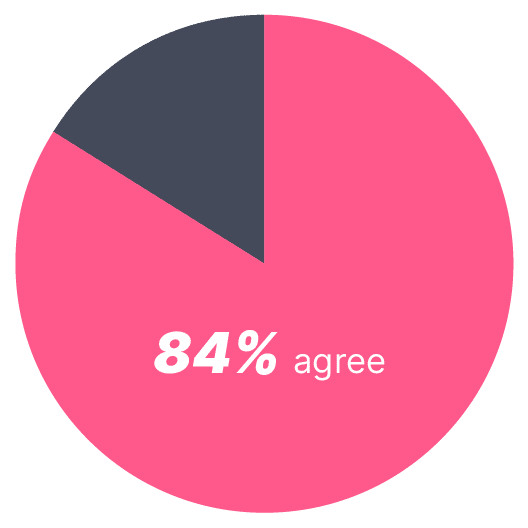
In a recent survey, Hiring During the Great Resignation: What’s Changing and What’s Working, 84% of respondents that use hiring assessments agreed or strongly agree they provide a helpful objective data point in their hiring process.
Improve your overall candidate experience
Sometimes companies that job-seekers are going to be turned off—or even turned away—by having to take a pre-employment assessment. In reality, research suggests that robust assessments actually improve the candidate experience.
Candidates can feel more fairly judged when the recruitment process includes an assessment step. Research by Hausknect, Day & Thomas indicates robust assessments improve the candidate experience. And a recent study by Speer, King & Grossenbacher shows that candidates view longer cognitive ability assessments to be fairer than shorter ones, as they provide a chance to showcase the candidate’s abilities.
Candidates are more likely to view your company in a positive light after participating in a fair recruitment process (and they might even be confident enough to apply at your company again if they don’t get the job this time around).
In 2020, Wonderlic offered a curated feedback report to more than 1,000 candidates, and
positive sentiments about our assessment increased by 7%.
Since then, we’ve made this option permanent.
Improve the legal defensibility of your hiring decisions
Beyond helping identify employees with a high potential to succeed, pre-employment assessments can also help enhance the objectivity and consistency of their hiring processes and reduce the likelihood employers are sued for following unfair job testing procedures.
The EEOC’s guidelines related to the use of pre-employment tests are the same as their rules for any selection procedures: in order to be considered legally defensible, the tests must demonstrate “job-relatedness” by measuring competencies directly associated with performance in the job the candidate is applying for. The best way to ensure that your assessments demonstrate “job relatedness” is to first conduct a job analysis that carefully defines the requirements and duties of the job.

How to decide which pre-employment test to buy
The ideal pre-employment test varies depending on an organization’s needs. What you buy will depend on factors like how often you hire, how much time you want to spend on assessments, and what kind of candidate experience you aim to provide. Use the tips below to identify the best pre-employment test for your hiring process.
Ensure the assessment is valid and reliable
A pre-employment test is only as helpful as it is valid and reliable. There are a few ways to validate pre-employment tests.
Construct validity
This shows that the test is effective in measuring the targeted construct it’s supposed to. To ensure construct validity, you can compare the pre-employment test with another test proven to measure the same criteria. If they are highly correlated, the pre-employment test can be said to demonstrate construct validity.
Content validity
This refers to how well the skills and requirements of the job are reflected by the test. Measuring content validity ensures the pre-employment test will identify candidates that will actually fit the role on paper. Content validity is crucial not only for acquiring the best hires but also for legal protection (tests must be relevant to the position at stake according to the Uniform Guidelines on Employee Selection Procedures (UGESP) and the Equal Employment Opportunity Commission (EEOC).
Criterion-related validity
An assessment demonstrates criterion-related validity if the results of the assessment are predictive of a function that’s related to job performance (and by association, business outcomes).
To tell if an assessment predicts performance, assessment scores must be statistically evaluated against a measure of employee performance. The degree to which the assessment results are related to a measure of performance—like counterproductive work behaviors—is the extent to which it exhibits criterion-related validity.
Reliability
If an assessment is reliable, the results will be very similar no matter when someone takes the test. If the results are inconsistent, the test is not considered reliable.
To determine the reliability of their tests, assessment companies pay close attention to two aspects of reliability in particular: re-test reliability and internal consistency measures.
To determine the former, the same group of people is given the test twice (a few days or weeks apart) in order to spot differences in results. Researchers then measure the correlation coefficient—a statistical measure ranging on a scale from 0, no correlation, to 1, perfect correlation, to assess the reliability of the test. Since no test is going to be completely error-free, the correlation needs to be 0.7 or higher to be considered reliable.
Internal consistency is measured by correlating scores on the first half of the test to those on the second half. Since these scores should be measuring the same thing, the correlation should also be 0.7 or higher.
Only use personality tests designed for making employment decisions
There are all variety of personality tests that help people determine their “type” or their “number,” or the degree to which they’re extroverted or introverted.
You may have worked taken these types of tests out curiosity either online or in a formal work setting. A few examples of this category of test are The Myers Briggs Type Indicator, the Personality Perfect test, and The Enneagram Personality Test.
These tests may prove interesting to people trying to understand what makes them tick, or to companies looking to understand the various work styles or interpersonal preferences of their employees. However, they should never be used to make hiring decisions, because the outputs are general, instead of being directly related to the necessary competencies of the job a candidate is applying for.
In fact, if you do use these kinds of tests for hiring purposes, you’re exposing yourself to legal liability in case you were ever sued for unfair hiring practices.
Consider the number of job profiles available to you
Don’t shoot yourself in the foot by limiting the number of job profiles available to you. The more profiles you can test, the better your chances of finding the perfect fit for your specific job.
A pool of 1,000 job profiles isn’t large enough to source the right job profile, especially with the world of work constantly evolving. Additionally, smaller databases with limited profiles rely on one-size-fits-all job descriptions. This doesn’t account for nuance and makes selecting the best fitting job profile more difficult.
Recently, Wonderlic developed a new job matching technology called TrueMatch that’s able to provide employers an in-depth understanding of the knowledge, skills, and abilities required to be successful for over 3.5 million unique jobs—and huge leap forward from the previous ceiling of 1,000 unique jobs. Learn more here.
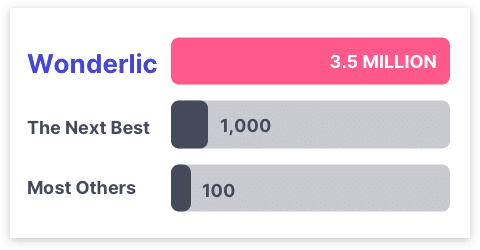
Weigh the amount of training and interpretation required
Hiring assessments that require extensive training to both implement and interpret results can be overwhelming. When the results are too complex, some hiring managers can make interpretation errors or succumb to “analysis paralysis”—both of which damage the reputation of the assessment internally.
A high barrier to entry can prevent some hiring managers from even using the assessment in the first place. And assessments that require too much case-by-case analysis can slow down your hiring process, giving your competitors a chance to snap up great talent before you do.
For the best results, find assessment tools that are generous in what they measure, but easy to understand and act on.
Decide whether you’d like candidates to get feedback
If you’ve ever taken a recruiting assessment or test, you probably wondered what your strongest and weakest areas were. But most assessment providers don’t make that information available to candidates and leave them guessing.
If you choose a pre-employment testing provider that gives candidates the option to receive feedback (curated to be helpful instead of critical), you’re providing applicants with something of value, even if they don’t get the job. As a result, they’re more likely to have a positive overall candidate experience—spread the word about that good experience within their network.

How to include pre-employment assessment testing in your hiring process
Pre-employment testing is generally fairly simple to integrate into your existing hiring process—and using these tests should be intuitive and helpful, not complicated and confusing. Here are a few best practices on how to get the most out of your pre-employment assessments.
Administer it at top of the funnel
Candidate testing at the top of the funnel is a good way to weed out ill-fitting candidates right from the start. Some companies opt to test after the initial resume screening, while others include testing as part of the application process, and review results even before reviewing resumes and cover letters.
The latter is the more efficient option, but can get pricy if pre-employment testing companies are charging on a per-test basis. That said, while requiring the completion of an assessment as part of every application may be a little more expensive, employers are both able to initially screen more candidates earlier in the process (which saves time) and increase their chances of identifying “hidden gems” with unconventional work histories who might have not otherwise passed a resume screen.
Give the same test to every candidate
For results to be accurate and fair, each candidate for a particular role should be administered the same pre-employment aptitude test, under the same circumstances. When you offer different job placement tests to different candidates, you’re introducing unwanted variables that also compromise the legal defensibility of your approach.
It’s very simple: same role, same test.
Use results to determine who to reach out to
Once you’ve reviewed your candidates’ assessment results, and reviewed their resumes, you can use both data sources to decide who to phone screen—and who to bring in for an interview.
With Wonderlic’s WonScore assessment battery, scores under 50 typically indicate the candidate will be a poor fit for the position.
Use assessment insights to help conduct more productive structured interviews
Highly structured interviews are extremely effective at reducing hiring bias—just like pre-employment tests—in that they add an extra level of objectivity and consistency to the candidate evaluation process. Everyone gets the same test, then everyone responds to the same core set of interview questions.
Structured interviews result in better hires when used alone, but they can be even more illuminating when used in conjunction with hiring assessment data. For example, after asking candidates the same four core questions pertinent to the role, a hiring team might add a set of questions that are contingent on how a candidate scored on the extraversion portion of their assessment. Those that scored low might get a question intended to dig more into what strategies they use to make sure their ideas are heard in meetings; those that scored high, might get a question focused more on what strategies they use to make sure other people’s ideas are heard in meetings.
Use pre-employment testing insights to improve onboarding
Pre-employment test data can also improve your new employees’ onboarding experience, resulting in better retention and a higher candidate success rate. Insights from hiring assessments provide onboarding teams with candidate-specific insights that show how the candidate learns best, what motivates them, and how they like to work with others.
After candidates take WonScore, for example, hiring managers gain access to a set of new hire success tips that provide insight into how to set each new hire up for success.
The tips are based on the employee’s test results and are tailored to their unique personality and needs. Managers can read exactly how to best train and manage the employee, as well as how to set them up for success in teams and relationships.

Conclusion
Finding candidates that are a good fit is hard enough in the best conditions. Throw in a labor shortage, and hiring employees who’ll do a great job and stick around for years to come becomes that much harder.
Recruiters dealing with these challenging conditions require deeper insights into their candidates’ likely future job performance and overall potential than what resumes and interviews are equipped to provide.
Employee assessment testing is the objective, non-biased piece of the hiring puzzle that can make the difference between getting stuck in a loop, where new hires need constant replacing, and making consistently excellent hires that can help your company grow for years to come.







